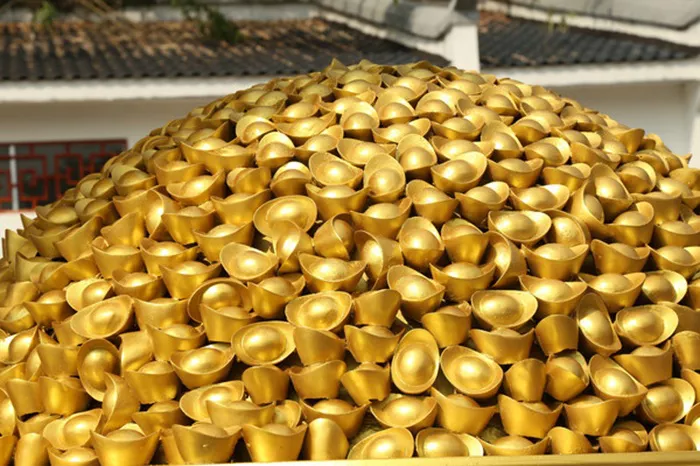Gold prices have experienced a significant surge in recent weeks, reaching new highs as global financial markets react to rising geopolitical tensions and a weakening U.S. dollar. Last week, gold prices spiked by 6%, marking the largest weekly increase since March 2020. The most recent trading price for spot gold reached $3,224.20 per ounce, prompting experts to predict further price increases.
David Morrison, head of market analysis at Trade Nation, noted that this sustained upward trend in gold prices differs from the typical pattern of stabilization or correction after reaching new highs. According to Morrison, the rise indicates that new buyers are entering the market, driven by a weak U.S. dollar and increasing demand for gold due to global geopolitical instability.
The U.S. dollar index recently fell to 99 points, its lowest level in three years. Jonas Goltermann, senior economist at Capital Economics, explained that the dollar’s decline reflects global concerns about geopolitical and tariff-related issues. However, Goltermann cautioned that it is still too early to assess the long-term impact of these fluctuations, as policymakers around the world continue to monitor and address the challenges.
Naeem Aslam, chief investment strategist at Zaye Capital Markets, expressed optimism about gold prices, acknowledging that the market is currently in an overbought condition. As fears escalate, Aslam explained, investors are increasingly turning to gold as a safe haven, potentially driving prices even higher. This sentiment underscores the role of investor psychology in commodity markets during periods of uncertainty.
Alex Kuptsikevich, senior market analyst at FxPro, also highlighted the potential for further price increases, citing increased buying activity from exchange-traded funds (ETFs) and continued market reactions to political developments. Analysts are closely monitoring the evolving situation, particularly announcements from the White House and ongoing trade tensions.
In the coming week, key economic data and statements from Federal Reserve Chairman Jerome Powell are expected to shed light on the U.S. economic outlook and influence market sentiment. Powell is anticipated to provide insights into the Federal Reserve’s monetary policy, which could have significant implications for both the gold market and broader financial markets. Additionally, the Bank of Canada is expected to maintain stable interest rates, while the European Central Bank (ECB) is likely to discuss lowering interest rates to support the eurozone economy.
Investors will also be watching for key economic indicators, including the Empire State manufacturing index, initial jobless claims data, and housing statistics, which are set to be released this week. These figures will provide further context for the ongoing trends in gold prices and the broader economic landscape.
Meanwhile, authorities in Vietnam are investigating two separate cases of gold fraud, highlighting the increasing sophistication of scams in the precious metals market. In Ninh Thuan Province, Truong Thi Ngoc Thuong, a 43-year-old woman, was detained for allegedly using fake gold necklaces to defraud gold shops and pawnshops. She replaced the clasps of fake gold necklaces with real gold and pawned them, defrauding 16 gold shops and four pawnshops of nearly 230 million VND (about $9,800). Thuong was arrested on her 21st attempt.
Similarly, in Hanoi, Pham Manh Gioi, a former jeweler, led a scam involving fake gold chains. Gioi’s group used silver-plated chains coated with a thin layer of gold and attached genuine gold clasps. They successfully defrauded eight gold shops in Hanoi and Bac Giang, totaling 527 million VND in losses.
Do Huy Thanh, General Director of Huy Thanh Jewelry, stressed the importance of consumer awareness when purchasing gold. He explained that gold is categorized into two types: jewelry gold (10K, 14K, 18K) and 24K gold for investment purposes. Jewelry gold is more durable due to the alloying of gold with other metals, while 24K gold is nearly pure and better suited for investment. Thanh warned consumers to be cautious of gold-plated products that may appear similar to real gold but are intended for display or fashion purposes.
To avoid purchasing fake gold, Thanh advised consumers to buy from reputable brands, request invoices, and ask for guarantees. He also recommended that gold businesses invest in advanced measurement equipment to ensure the authenticity of their products and avoid relying solely on manual inspection.
The recent surge in gold prices and the rise in fraudulent activities serve as a reminder of the importance of vigilance in both the investment and retail gold markets. As global uncertainties continue to drive demand for gold, informed purchasing decisions will be essential to protect consumers and ensure the integrity of gold transactions.
Related topics:
- India Surpasses China in Gold Purchases, Buying 51% More in Three Months
- Qilu Bank Enhances Support for Small Businesses with Innovative Financial Tools
- Bitcoin Poised for a Surge Amid Gold’s Delivery Delays, Expert Claims


